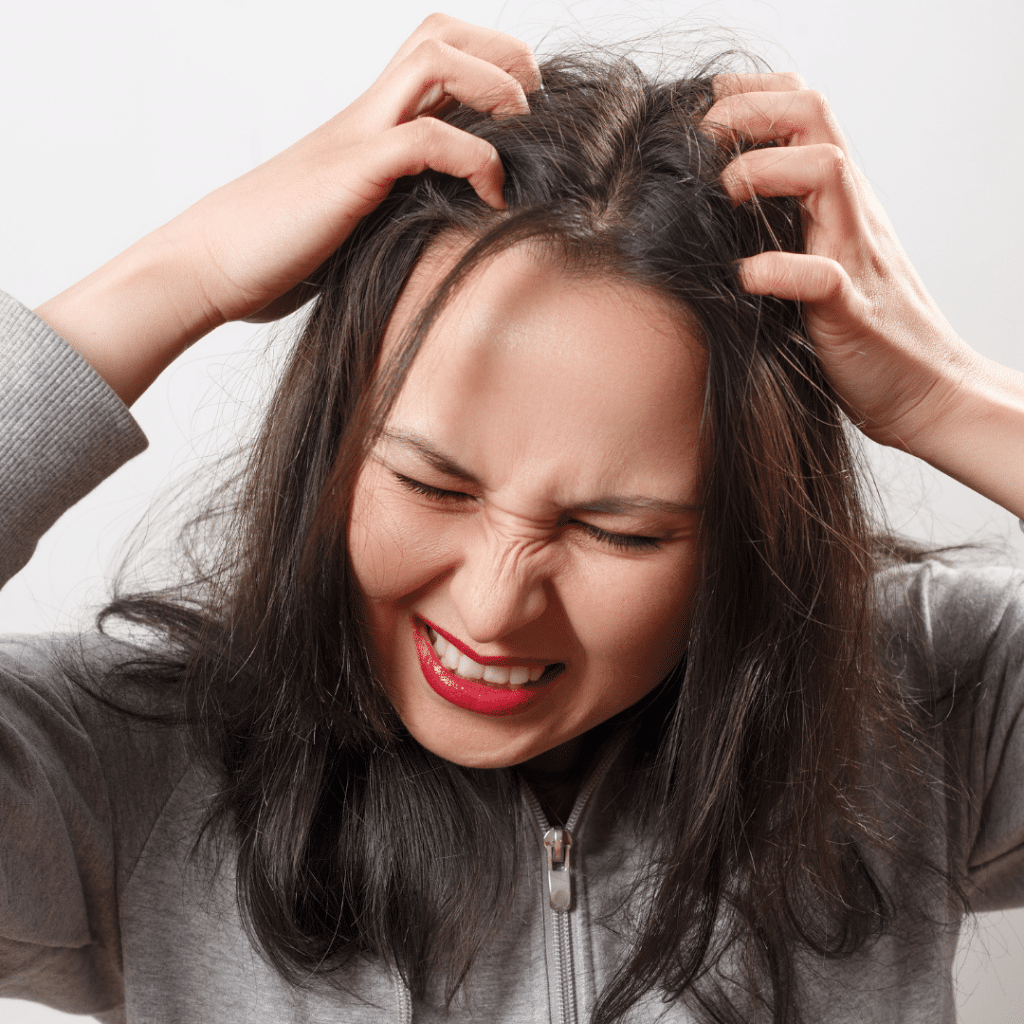Understanding Seborrheic Dermatitis
Seborrheic dermatitis is a common skin condition that primarily affects the scalp but can also appear on other oily areas of the body, like the face, upper chest, and back. Characterised by redness, flakiness, and sometimes an itchy rash, seborrheic dermatitis can range from mild dandruff to more intense symptoms, making it an uncomfortable experience for those affected. Let’s explore what causes seborrheic dermatitis, its symptoms, and the best approaches to treatment.

What Is Seborrheic Dermatitis?
Seborrheic dermatitis is a chronic form of eczema that results in inflammation and scaling of the skin. It occurs in areas with a high concentration of sebaceous (oil) glands, leading to excessive oiliness combined with flaky, sometimes greasy patches. Though it can occur in people of all ages, it’s most common in adults between 30 and 60 years old, and it can appear as early as infancy, where it’s often called “cradle cap.”
Causes:
The exact cause of seborrheic dermatitis remains unknown, but there are several contributing factors:
- Overgrowth of Malassezia Yeast: This naturally occurring yeast lives on everyone’s skin, but in people with seborrheic dermatitis, it can grow excessively, triggering inflammation and irritation.
- Genetic Predisposition: There may be a hereditary component that makes certain individuals more susceptible to this condition.
- Hormonal Changes and Stress: Hormones can affect oil production, which may worsen seborrheic dermatitis, while stress can exacerbate symptoms.
- Climate: Flare-ups are often more common in cold, dry seasons.
- Underlying Health Conditions: Seborrheic dermatitis is sometimes more prevalent in individuals with certain health conditions, including Parkinson’s disease and other neurological conditions.
Recognising the Symptoms and understanding Seborrheic Dermatitis
Seborrheic dermatitis can vary in appearance and intensity, but common symptoms include:
- Red, greasy patches of skin covered with white or yellowish scales
- Persistent dandruff that doesn’t respond well to regular dandruff shampoos
- Itchiness or discomfort on the scalp, face, or affected areas
- Crusting and flaking along the hairline, in the eyebrows, around the nose, or on the chest
In infants, cradle cap may present as thick, crusty patches on the scalp that are generally harmless and tend to resolve on their own within a few months.
Effective Treatment Options
Managing seborrheic dermatitis is often a combination of daily care routines, targeted treatments, and lifestyle adjustments. Here are some of the most effective options:
1. Medicated Shampoos
Medicated shampoos are often the first line of treatment, particularly for scalp-related symptoms. Look for ingredients like:
- Zinc Pyrithione: Reduces yeast on the scalp and relieves itching and flaking.
- Selenium Sulphide: Helps slow cell turnover and reduce fungal overgrowth.
- Ketoconazole: An antifungal ingredient that controls the yeast associated with seborrheic dermatitis.
2. Topical Corticosteroids and Antifungals
For more severe cases, dermatologists may recommend topical corticosteroids to reduce inflammation and antifungal creams to control yeast. These treatments are typically short-term, as prolonged use of steroids can lead to skin thinning.
3. Emollients and Moisturizers
Moisturising helps soothe irritated skin and prevents it from becoming overly dry. Creams containing ceramides, hyaluronic acid, and other hydrating ingredients can restore the skin barrier and reduce symptoms. Look for lightweight, non-greasy formulas to avoid clogging pores.
4. Lifestyle Adjustments
Lifestyle changes can help manage and reduce flare-ups. These include:
- Stress management: Since stress can worsen symptoms, practices like meditation and exercise may help.
- Balanced diet: Reducing sugar and processed foods may help reduce inflammation.
- Regular cleansing: Gentle cleansing of affected areas can help reduce oil buildup and yeast growth.
5. Home Remedies
Some people find relief from natural remedies. While they may not work for everyone, popular options include:
- Apple Cider Vinegar: Known for its antifungal properties, it can be diluted and applied to affected areas.
- Tea Tree Oil: With antifungal and anti-inflammatory benefits, tea tree oil can be added to shampoo or diluted for topical use.
Managing the condition Long-Term
Seborrheic dermatitis is a chronic condition, meaning it may come and go throughout life. Consistency in treatment and lifestyle adjustments can significantly reduce flare-ups and control symptoms. It’s also helpful to recognise triggers—cold weather, stress, or certain skincare products—that may worsen symptoms. Consulting a dermatologist is recommended, especially for severe cases, as they can tailor treatments to your specific needs.
Conclusion
Seborrheic dermatitis, though common and often chronic, is manageable with the right care and treatment. With a proactive approach that includes medicated shampoos, topical treatments, and lifestyle adjustments, many people can successfully control symptoms and maintain healthy skin. By understanding what causes seborrheic dermatitis and how best to treat it, you can take steps to improve both your comfort and skin health.
Featured Bragan Skincare Products
-
€39.99 – €100.00Price range: €39.99 through €100.00Select options This product has multiple variants. The options may be chosen on the product page
-
€100.00Select options This product has multiple variants. The options may be chosen on the product page

